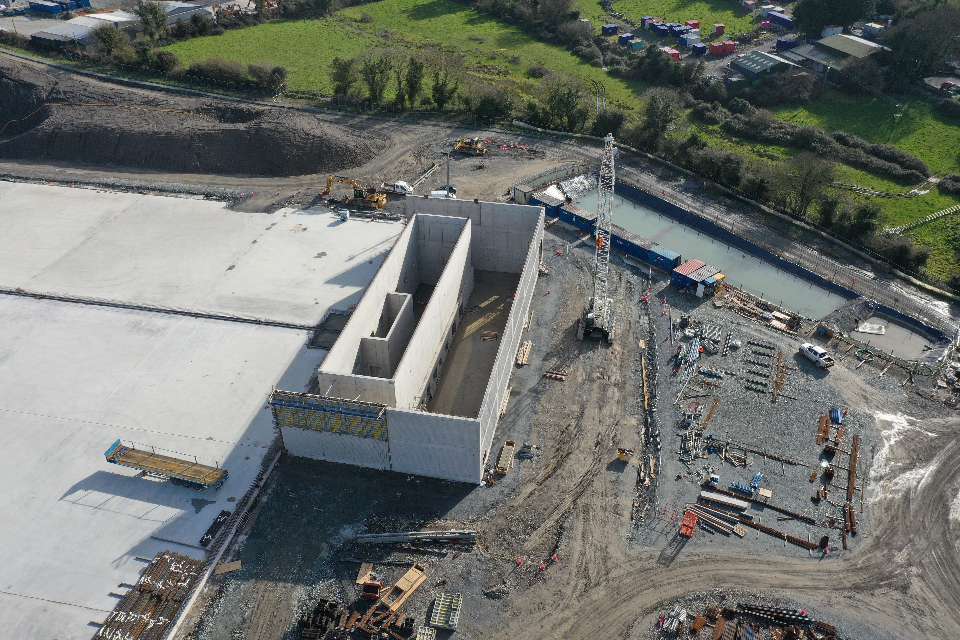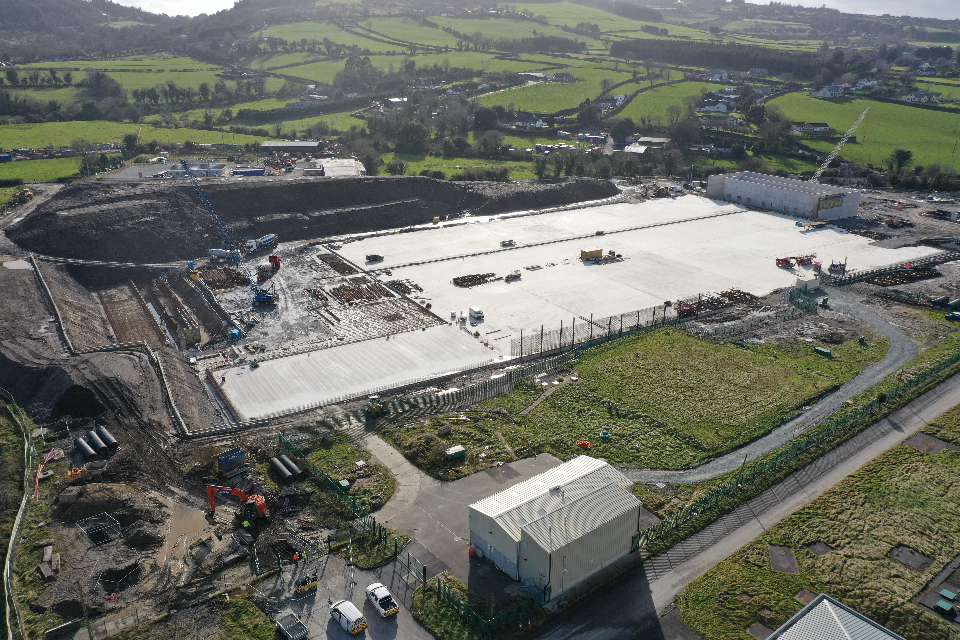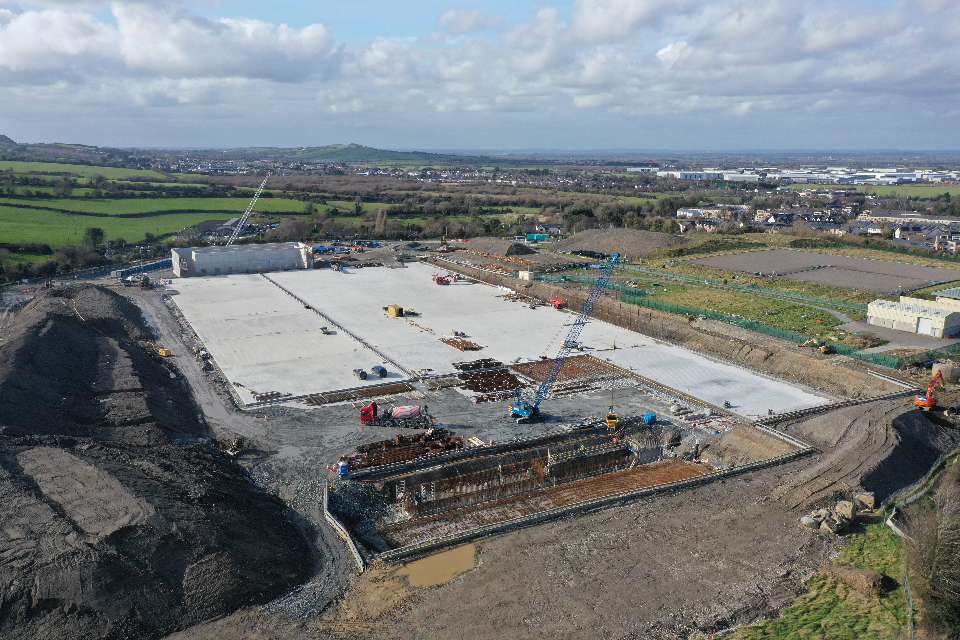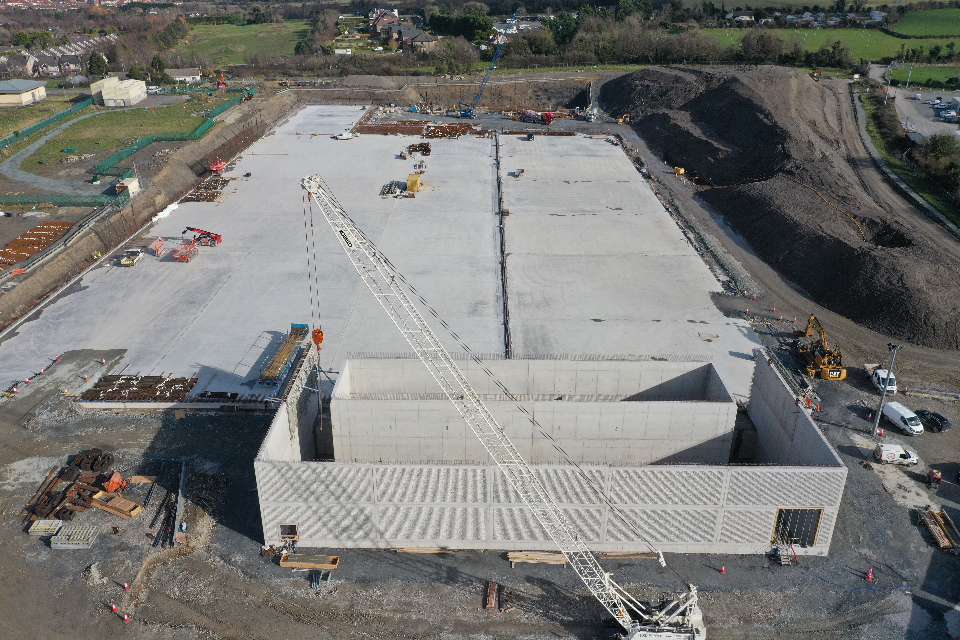Saggart Reservoir Project
Helping to increase capacity and supply of drinking water to the Greater Dublin Area
Client:
Coffey Construction/ Irish Water
Location:
Dublin, Ireland
Completion Date:
2021 - Ongoing
Capital Investment
Sector:
Sub-Sector:
Overview
The Saggart Reservoir Project involves constructing a new covered treated storage reservoir that will safeguard the water supply to homes, essential services, and businesses in the Greater Dublin Area. The upgrade marks the first significant investment in the existing Saggart waterworks since it was built in the 1950s. This new, state-of-the-art reservoir will house over 100 million liters of treated drinking water, or the equivalent of 40 Olympic-sized swimming pools, supplied from the Ballymore Eustace treatment plant (Ireland’s largest water treatment plant). The scheme also includes a new electro-chlorination plant building and associated infrastructure. This project will provide strategic treated water storage capability at Saggart, South County Dublin, which is needed to support the construction of houses and schools, attract new industry, and allow companies to expand and grow across the GDA (Greater Dublin Area). In terms of size and scale, the new reservoir can store enough water to supply almost 300,000 homes for one day.
Our role
Coffey Construction has engaged Ayesa to provide detailed civil, structural, geotechnical, and hydraulic design as well as PSDP services. Ayesa will support Coffey Construction in delivering this essential infrastructure with the construction of the new reservoir and associated pipelines commencing in March 2021 and a completion date expected in 2024.
Challenges
Increasing demands in the Greater Dublin Area is a challenge for the national utility Irish Water’s long-term water supply solution. Some 600 ML/day of treated water currently produced in the GDA Water Network meets current demand levels to supply approximately 1.5 million customers in Dublin and the surrounding areas. However, there is limited headroom capacity available - only c. 3% (c.18ML/d). At times of water stress, especially during periods of drought, this capacity is under more strain. Saggart is part of the long-term water supply and delivery plan that includes leakage reduction in the region and transferring spare capacity from Athy to Greater Dublin.
Saggart Reservoir Update: The project has recently hit another key milestone with the completion of the inlet structure and reservoir floor, leading to its next phase, the construction of the reservoir walls.
Benefits and Innovation
The benefits of this scheme included increased security of supply and greater network resilience of the drinking water supply to businesses and residents in the Greater Dublin Area, which will enhance future growth and development in the region.
Sustainability Initiatives
- Public Realm
Sensitive receptors are a key challenge in the Saggart Reservoir project. The majority of Saggart residents live on the northern edge of the site construction works. As a result, regular working hours have been reduced, and the monitoring of noise, dust, vibration, and odour has been increased. Site lighting has been relocated to reduce the impact on residents. A comprehensive one-way traffic management system was introduced onto Castle Street to avoid delay and disruption to residents as reasonably practicable. - Carbon reduction
In advance of the compound setup in Saggart the lighting and office layout were pre-planned to orientate the offices for optimum solar gain and reduce heating requirements. The office layout was changed to enable greater energy efficiency and comfort while reducing the demand for heaters. The project utilised 60% GGBS Concrete in the base, and 30% GGBS Concrete mix in the wall pours. As well as the environmental benefit of utilising a by-product, this replacement requires a less energy-intensive manufacturing process. By comparison with Portland cement, the manufacture of GGBS requires less than a fifth of the energy and produces less than a fifteenth of the carbon dioxide emissions. -
Recycling demolition waste
A comprehensive site waste management plan was developed to ensure maximum recycling, reuse, and recovery of waste with a diversion from landfills. The demolished existing concrete tanks were reused as hardcore for haul roads. Excavated topsoil to be reused on-site as berms for a reservoir. Article 27 by-product applications completed to designate the waste soil and stone as a by-product and therefore allow its use in place of raw material on sites with planning in the locality.
Treated water
100 million litres
New reservoir storage
Supplies +/- 300,000 homes for one day.
Type of work


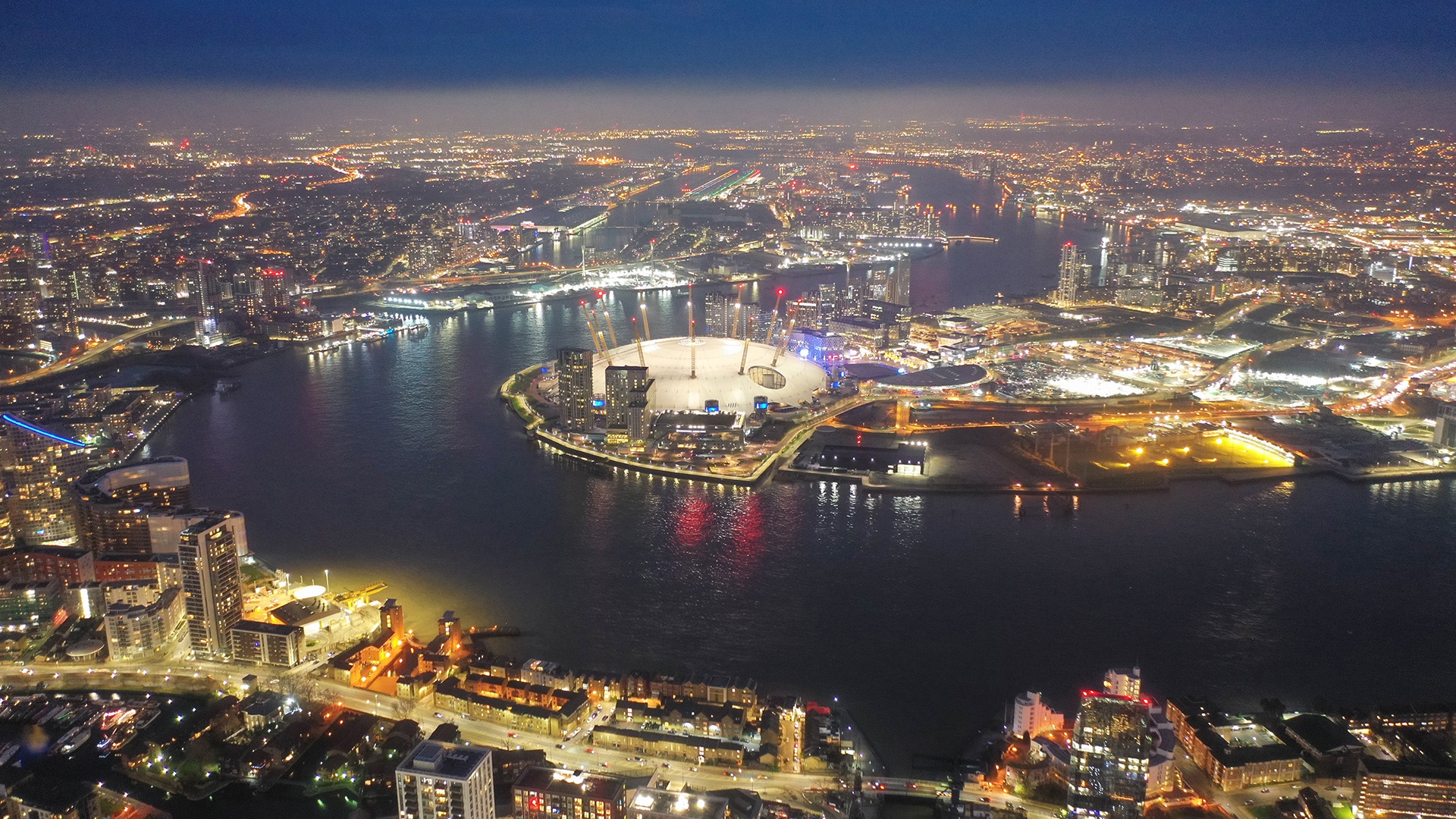

.png)


.jpg?width=960&height=640&name=W3338_N11%20(2).jpg)
